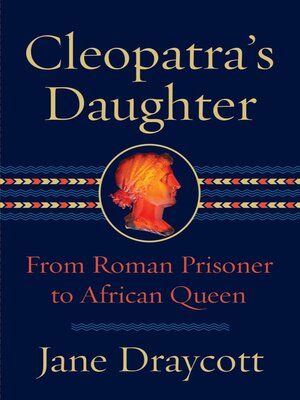
Sign up to save your library
With an OverDrive account, you can save your favorite libraries for at-a-glance information about availability. Find out more about OverDrive accounts.
Find this title in Libby, the library reading app by OverDrive.



Search for a digital library with this title
Title found at these libraries:
| Loading... |
The first modern biography of one of the most influential yet long-neglected rulers of the ancient world: Cleopatra Selene, daughter of Antony and Cleopatra.
"A vibrant, fascinating portrait of a great woman who deserves her place in the pantheon of Roman queens." —Emma Southon
As the only daughter of Roman Triumvir Marc Antony and Egyptian Queen Cleopatra VII, Cleopatra Selene was expected to uphold traditional feminine virtues; to marry well and bear sons; and to legitimize and strengthen her parents' rule. Yet with their parents' deaths by suicide, the princess and her brothers found themselves the inheritors of Egypt, a claim that placed them squarely in the warpath of the Roman emperor.
"Supported by a feast of visual and literary references" (Caroline Lawrence), Cleopatra's Daughter reimagines the life of Cleopatra Selene, a woman who, although born into Egyptian royalty and raised in her mother's court, was cruelly abandoned and held captive by Augustus Caesar. Creating a narrative from frescos and coinage, ivory dolls and bronzes, historian and archaeologist Jane Draycott shows how Cleopatra Selene navigated years of imprisonment on Palatine Hill—where Octavia, the emperor's sister and Antony's fourth wife, housed royal children orphaned in the wake of Roman expansion—and emerged a queen.
Despite the disrepute of her family, Cleopatra Selene in time endeared herself to her captors through her remarkable intellect and political acumen. Rather than put her to death, Augustus wed her to the Numidian prince Juba, son of the deposed regent Juba I, and installed them both as client rulers of Mauretania in Africa. There, Cleopatra Selene ruled successfully for nearly twenty years, promoting trade, fostering the arts, and reclaiming her mother's legacy—all at a time, Draycott reminds us, when kingship was an inherently male activity.
A princess who became a prisoner and a prisoner who became a queen, Cleopatra Selene here "finally attains her rightful place in history" (Barry Strauss). A much-needed corrective, Cleopatra's Daughter sheds new and revelatory light on Egyptian and Roman politics, society, and culture in the early days of the Roman Empire.






